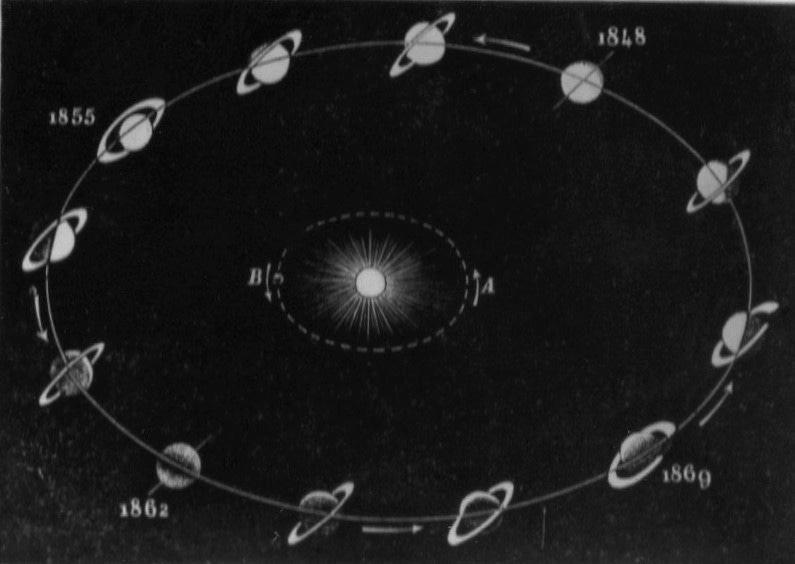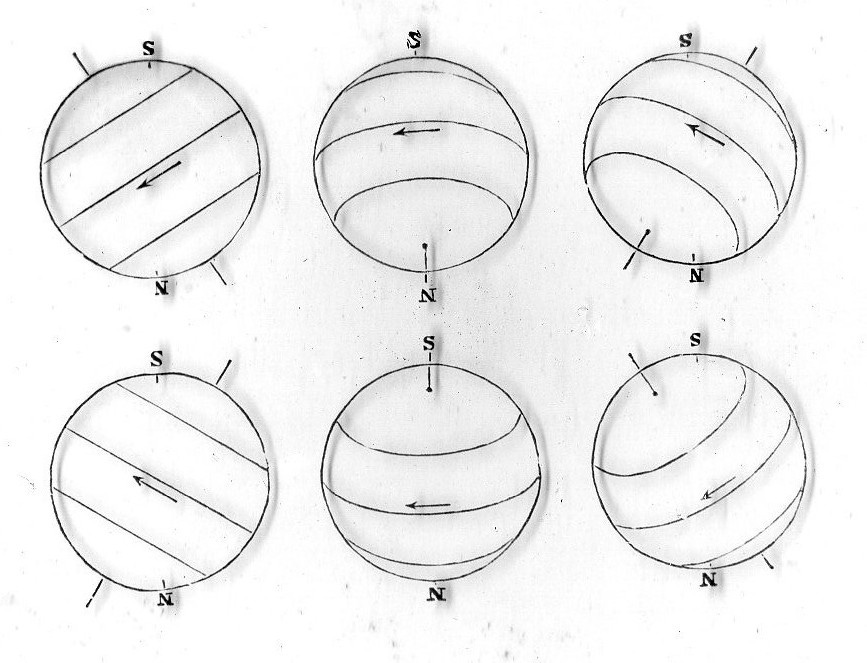Astronomy Lantern Slides
Concepts in astronomy are illuminated using a projecting technology dating back to the 17th century
Welcome or welcome back to History Buzz! If you’re a subscriber to the Buzz, thank you! If you’re new here, or you haven’t become a subscriber yet, hit that subscribe button to have History Buzz delivered directly to your inbox. If you can, please consider a paid subscription to support the research and writing that make History Buzz possible.
“Astronomy forces you to look at the universe with different eyes.”
- Sara Seager, The Smallest Lights in the Universe

In the collection of the Andover Center for History & Culture (ACHC), there are a handful of slides that predate the modern slide projector. They are lantern slides, and they were made to be viewed through a contraption called a magic lantern.
At Brown University’s Joukowsky Institute for Archaeology, a demonstration of projecting with the magic lantern was captured in a series of photographs, which can be seen here: https://brown.edu/Departments/Joukowsky_Institute/resources/lanternslides/2566.html.
According to Constance McCabe at the National Gallery of Art, “Lantern slide plates were commercially manufactured by sensitizing a sheet of glass with a silver gelatin emulsion. The plate was then exposed to a negative and processed, resulting in a positive transparent image with exceptional detail and a rich tonal range.” She goes on to write that, “lantern slides were used for home entertainment and public lectures, and they were displayed in photographic exhibitions.”1
In these samples from ACHC’s collection that depict information from astronomy lessons we can see that some lantern slide images were hand drawn.



Lantern slides became much more popular and widespread once photography was used to create their images. Artists would paint on top of the photographs to add color or tint.2 This technique is demonstrated in the University of Michigan library’s online art exhibit, An Artful Life: The Colored Lantern Slides of Anna Caulfield McKnight, https://apps.lib.umich.edu/online-exhibits/exhibits/show/caulfield/lantern-slides--an-historical-
Some slides in the ACHC collection use photographs instead of drawn diagrams as their images, such as this colorized slide that has painting and lettering over a photograph.

ACHC has many other lantern slides that you can explore by clicking here, using the online collection search tool.
Thanks for reading!
What do you think of the magic lantern and the lantern slides?
If you looked at an image that is projected, with light shining from behind a slide, how would you experience it compared to viewing images on a computer screen or on a printed page?
Images (in order of appearance):
https://andoverhistoryandculture.pastperfectonline.com/photo/B448AB7E-D19D-4E68-BAF5-188831395343
https://commons.wikimedia.org/wiki/File:Magic_Lantern.jpg
https://andoverhistoryandculture.pastperfectonline.com/photo/85EF75D3-6131-4295-AC02-375909891750
https://andoverhistoryandculture.pastperfectonline.com/photo/676C940E-689E-4E58-9C36-990167794671
https://andoverhistoryandculture.pastperfectonline.com/photo/2D4D8234-C917-41A0-97C5-432066044694
https://andoverhistoryandculture.pastperfectonline.com/photo/86D381B7-830E-42AA-8D20-140068698120
https://andoverhistoryandculture.pastperfectonline.com/photo/3DF98CE2-1B63-42A8-BA9E-681924813250
McCabe, Constance. “Lantern Slides.” National Gallery of Art. URL: https://www.nga.gov/research/online-editions/alfred-stieglitz-key-set/practices-and-processes/lantern-slides.html. Accessed 5/23/24.
An Artful Life: The Colored Lantern Slides of Anna Caulfield McKnight. University of Michigan library. URL: https://apps.lib.umich.edu/online-exhibits/exhibits/show/caulfield/lantern-slides--an-historical- . Accessed 5/23/24.





In the middle of the last century it was common to have your photos turned into projection slides, so the whole family could relive travels and other events. The slide projector - no longer termed a "magic lantern" - was a pretty utiliitarian #evice.
I remember lantern slide shows at our church in Rochester NY and in grade school (1940's and early 1950's). The obsolescence is only apparent when looking back.
Also it was possible to get a slide reversed or upside down. Example, slide #1917.059.201 "planet and position" is upside down, very deceiving - the letters N and S look okay, but the little slashes at top and bottom of letters are upside down. Also, we usually picture "N" North as at the top of a map.
Regards
Larry